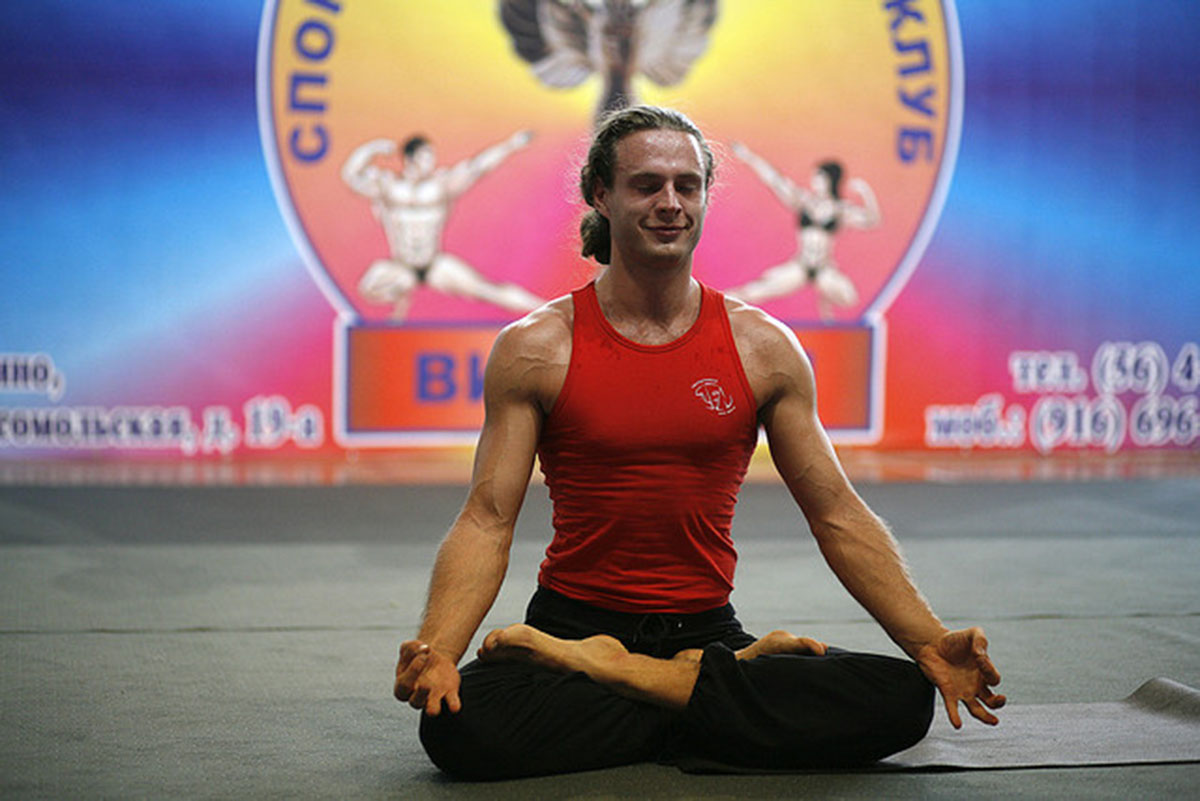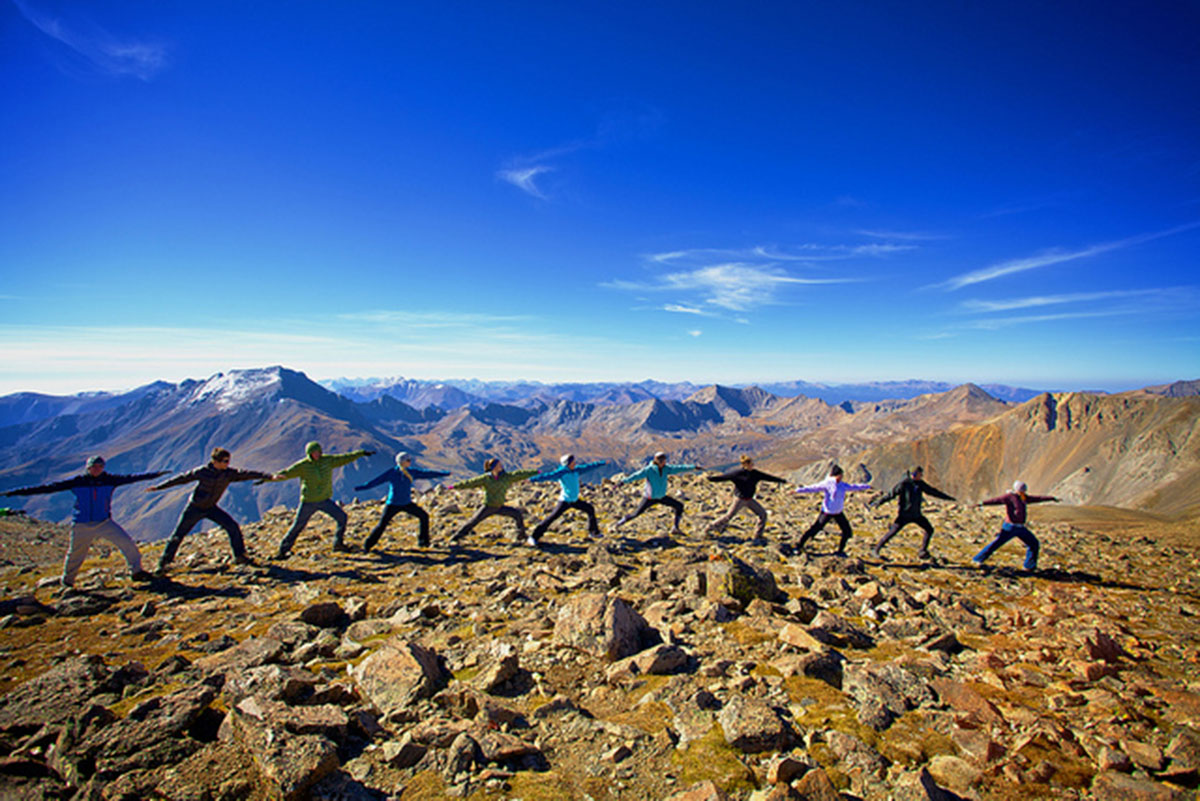Yoga has things to teach us about attitudes to performance, achievement and ourselves, as well as practical lessons on movement quality and patterning. The value of what yoga has to teach us isn't about how it can make you look, but it's not directly related to yoga's spiritual teachings either.

The Spiritual Value Of Yoga
Yoga is usually associated with the Hindu religion. But there are forms of yoga that aren't anything to do with Hinduism: Sikhs practice a form of yoga that's specific to their religious tradition. Yoga-like training methods including Qigong and the ground training syllabus of Silat appear in many different cultures around the world. And mainstream Indian yoga predates the Hindu religion anyway. So if you find yoga seems to help you feel calmer, more "centered" or more relaxed and confident, it probably does. That doesn't mean you have to give credence to a particular religious or spiritual tradition.
Performance
How do you know if today was a good day for you in the gym? Objective data. You look at what you lifted, reps, sets, and then you know. I'm certainly not denigrating ideas like progressive overload, planning your training and keeping a training journal. They're essential to progress. But they can help inculcate a mindset that's gradually destructive, one that sees people chasing PRs and looking to hit standards simply because they feel they should or they must.
Many yoga teachers advise their students to use their breath as a guide, suggesting that if their breathing is becoming ragged or strained, they're pushing too hard for performance. That's obviously not applicable to, say, sprint training. But the principle of letting each session be guided to some extent by how you feel is actually a good one. And while it's easy to dismiss when it comes from touchy-feely yoga teachers, when it comes from weightlifting coaches like Dan John it's hard to ignore.
READ Does Yoga Count As Cardio?
John recalls meeting Pavel Tsatsouline for the first time and doing his "easy strength" training. This Oly lifter and Highland Games competitor (and winner) was under orders to "never miss a rep, in fact, never even get close to struggling. Go as light as you need to and never go over ten reps... it is going to feel easy. When the weight feels light, simply add more weight." (Source: DanJohn.net). Just the sort of advice a yoga teacher might give. What was the result? "I broke my lifetime best... lifts went through the roof." (Always a risk when you're doing O-lifts at home.)
What Can We All Learn From Yoga?
Perfection
Yoga teacher Esther Eckhart says one of the standard ways for people to sabotage their own practice is by trying to hard to get into the "right shape" for a pose. Viewing yoga postures as a shape you have to force yourself into is the wrong way to view them. Just like every bodybuilder knows the bar doesn't matter (it's just a tool to get you jacked, bro), so the yoga practitioner should know that the pose isn't important; instead it's the pattern of contraction and inhibition that counts. However you train, you can learn from this.

There are other valid ways of determining how we should move and what we should do that aren't visual and aren't perfectionist. How do you know when your squat form is right? When it feels comfortable and stable and you're lifting with no orthopedic issues, or when it "looks perfect"? I know which one I'd pick — and the best minds in the business, including Mike Reinolds, ex-Red Sox strength coach, who points out that given the anatomical differences that can exist in people's hips as well as their injury history and other factors, making everyone squat the same doesn't make sense. Instead "feel" cues should be used to reach a squat form where you can get the results you want without hurting yourself -just what a yoga teacher would recommend.
Patterning
In light of my comments about the dangers of perfectionism this is going to sound slightly disjointed,but bear with me: one of the big contributions yoga has to offer us, whether we do yoga or not, is the emphasis it places on patterning. In a yoga session there's relaxation and recovery, restabilization and reflexion built into class structures. But there's also an emphasis on patterning: on developing movement quality and improving skill at doing small, granular movements. The focus on tiny improvements aids yoga's meditative aspects by encouraging practitioners to be "present" since obviously, you can't absentmindedly concentrate. It's a contradiction in terms. But the focus on what's happening inside as we move, on building better patterns rather than making every session focused on an external goal, is actually very important and effective. It pays off across athletic endeavors.
Compassion
OK, now we really are getting into touchy-feely territory. But that doesn't mean that this isn't worthwhile. How we treat injuries, niggles and slight problems determines how they'll grow up. Treat them wrong and they'll go from a bouncing baby overuse injury to a big, strapping hospitalization.
READ Yoga Exercises To Combat Prenatal Back Pain
One of the problems with the performance-first attitude to training is that most of us don't actually need in-the-gym or on-the-field performance. Not all that much. You might want it, and that's fine, but you don't actually need it. What most of us need is a generalized program of physical fitness that will see us active and healthy into old age, not a 1000lb back squat. But the other problem with performance goes deeper. We focus on performance at the expense of the thing that performs: us. We view the body, the whole self, as an unwilling employee from whom performance must be extracted by threats and blandishments. The yoga tradition suggests that we learn to treat ourselves and our bodies, as well as other people, with compassion. That's not a flavor of herbal tea, and there's no reason why self-regarding hippies should have a monopoly on good idea because they heard of it first.
Look at things a different way: congratulate yourself on your successes, and look for small steps toward your goal. We all know this is true: if you walked into a gym, grabbed a bar with hundreds of pounds on it, couldn't lift it and said: "this gym stuff's not for me. I can't do it," people would think you were missing the point. But in a way we can all be like that. When we get angry that we can't do today what we could last week, or we aren't making gains (or, indeed, gainz) or when you have a session where your warm up levels you and you think you might have to go home early, it's important to be compassionate with yourself.
Actual Yoga
Good yoga, well taught, can help you feel better and improve athletic performance. But you don't have to go near an asana to learn these lessons that can apply to anyone's training!
If you feel like I've nailed it or you have something to add, join the conversation in the comments section below!
- Photo courtesy of oObsessed: www.flickr.com/photos/impuls-f/3947686324/
- Photo courtesy of Zach Dischner: www.flickr.com/photos/zachd1_618/8544069414/
- DanJohn.net: "Even Easier Strength." http://danjohn.net/2011/06/even-easier-strength-perform-better-notes/ MikeReinold.com: "Is Perfect Squat Form a Myth?" http://www.mikereinold.com/2014/11/perfect-squat-form-myth.html


Your thoughts on this